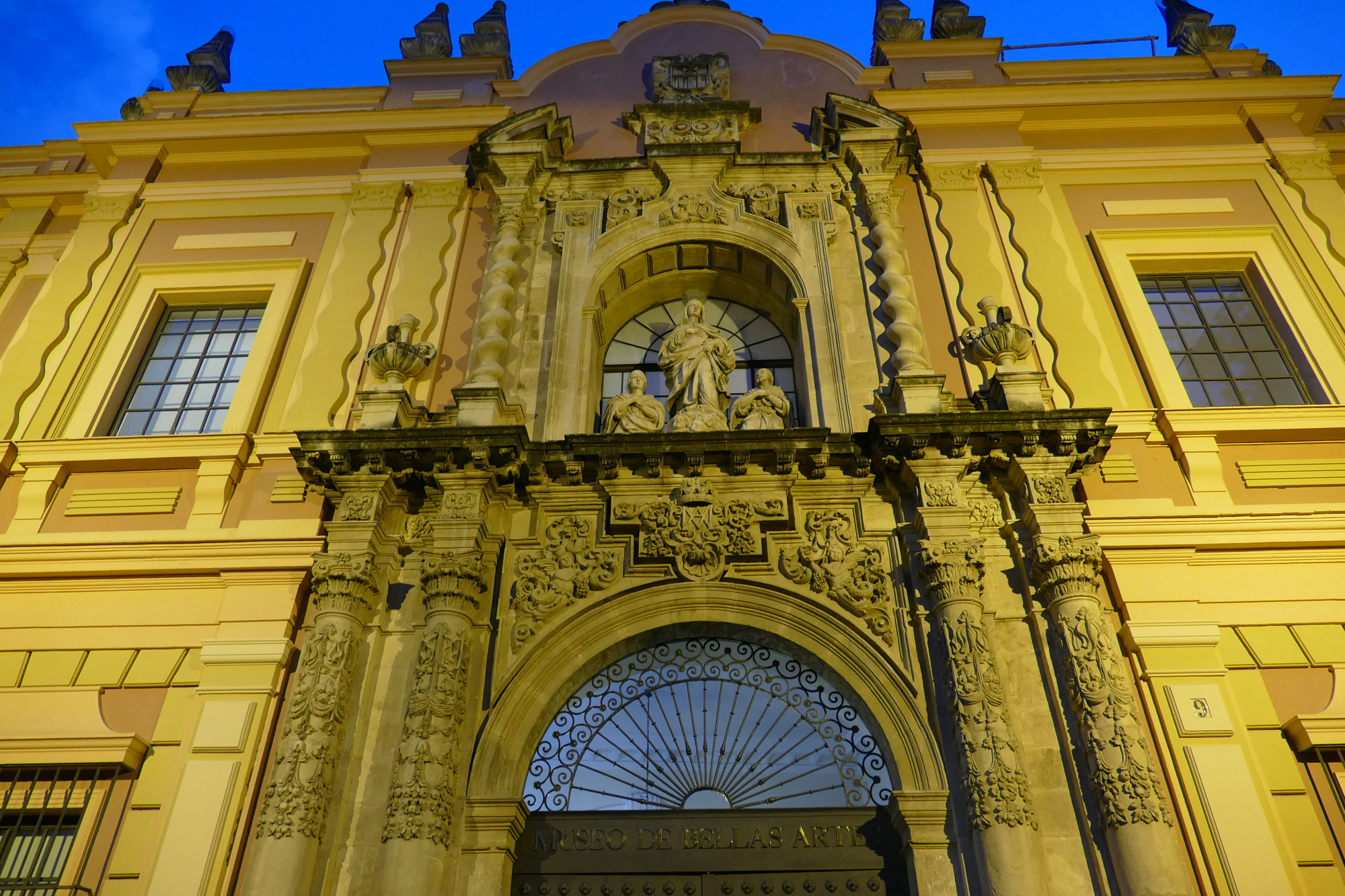
El antiguo convento de la Merced pasó a ser Museo de Bellas Artes en 1839. Desde entonces, y debido a la extraordinaria riqueza de sus fondos, se ha convertido en la mejor pinacoteca de España, después del Museo del Prado.
La actual entrada es una gran portada que tiene, en la hornacina, una Virgen de la Merced, junto a otros personajes. El vestíbulo de entrada y los claustros muestran una rica y variada colección de azulejos sevillanos.
Los fondos del museo sevillano son herencia del expolio artístico sufrido por la ciudad hispalense en la primera mitad del siglo XIX por agentes extranjeros. La colección actual de pinturas se divide en dos núcleos principales: el del barroco sevillano y las obras correspodientes al romanticismo y al costumbrismo. Además de importantes pinturas de las escuelas sevillana, valenciana y catalana del siglo XV y la presencia de buenos ejemplos de pintura flamenca, una de las obras maestras del museo es, sin duda, el retrato de ‘Jorge Manuel’, pintado por su padre, El Greco.
Dónde: Plaza del Museo, 9
Horario: martes, de 14.30 a 20.30 horas. Miércoles a sábado, de 9.00 a 20.30 horas. Domingos, de 9.00 a 14.30 horas. Lunes cerrado
Precio: 1,50 euros. Gratis para ciudadanos de la UE

The former convent of Merced Calzada was restored to create this magnificient Fine Arts Museum in 1839. Since then, and thanks to its impressive collection, it has earned the status of one of the most important art collections in Spain after the Prado Museum.
The entrance to the museum is a beautiful archway that contains the image of the Virgin of Mercy alongside other characters in a vaulted niche. The entrance hall and the cloisters contain a rich and varied collection of tiles from Seville.
The museum’s collection comprises the works which survived the artistic pillaging by foreign exporters that took place in Seville in the first half of the 19th Century. The current collection of paintings is divided into two sections: Baroque Seville and secondly a section dedicated to romantic and typical images.
Apart from works belonging to famous schools of Seville, Valencia and Catalonia in the 15th Century, there is also a collection of Flemish paintings. One of the gems of the museum is undoubtedly the ‘Portrait of Jorge Manuel’ which was painted by his father, El Greco.
Where: Plaza del Museo, 9
Opening Hours: Tuesday, from 14:30 to 20:30h. Wednesday to Saturday from 9:00 to 20:30h. Sundays from 9:00 t0 14:30h. Closed on Monday.
Price: €1.50. Free admission for EU members.
